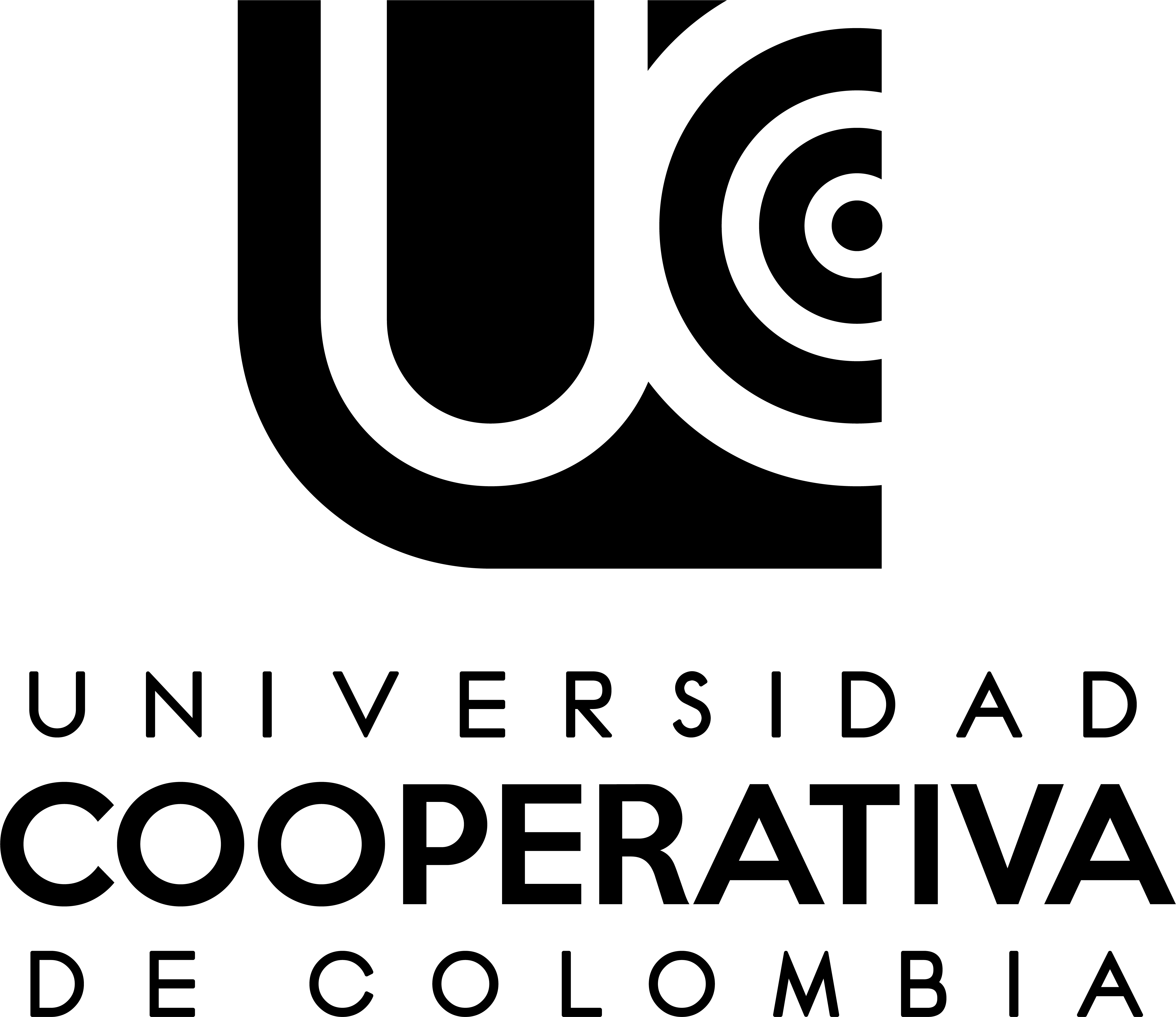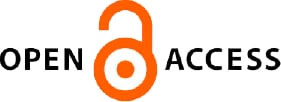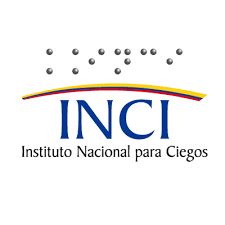Automated, technified and traditional aquaponic systems : a systematic review
Faculty of Engineering, Master student in Biosystems Engineering Program, Universidad
Nacional de Colombia, Bogotá, Colombia.
email: svacav@unal.edu.co
Faculty of Engineering, Department of Civil and Agricultural Engineering, Universidad
Nacional de Colombia, Bogotá, Colombia.
email: olgarcian@unal.edu
SENNOVA Centro de Biotecnología Agropecuaria, Servicio Nacional de Aprendizaje
SENA, Mosquera, Colombia
email: mcolorado@sena.edu.co
Aquaponics are defined as hydroponic crops merged with recirculating aquaculture systems and bacteria, achieving a synergic relationship that takes fish wastewater and uses it in order to grow plants, then the last one in association with nitrifying bacteria are used as a natural filter that removes dissolved nitrogen, ammonia, among others, controlling the fish waste accumulation. Nowadays there are different research areas in aquaponics, from ones focused on the applied techniques in aquaculture and hydroponic sub-systems; through applied sciences such as modeling from both physical and chemical systems; arriving to the types of aquaponics, qualified from technification grades; concluding with fish and plant crop species and their interaction. In this paper a systematic review is carried out in order to observe the research current state in automated, technified and traditional aquaculture systems, thus having a sight of the investigative orientation in this field. This review is based on scientific papers from four databases, taken in March of 2020, obtaining 1356 results, evaluated and filtered for further analysis. From the review it was found that there is an exponential quantity growth in papers per year, moreover, it is noted that the paper fields of greatest concentration are aquaculture, agriculture, environment, water analysis, horticulture and electronics, the most worked species are lettuce (Lactuca sativa) in hydroponic NFT and tilapia (Oreochromis niloticus) in single recirculating aquaponic systems (SRAPS). With the obtained data it was built a diagram that consolidates current research branches in aquaponics.
Junge R, König B, Villarroel M, Komives T, Jijakli MH. Strategic points in aquaponics. Water (Switzerland) 2017; 9(3),182:1-9. https://doi.org/10.3390/w9030182.
Maucieri C, Forchino AA, Nicoletto C, Junge R, Pastres R, Sambo P, et al. Life cycle assessment of a micro aquaponic system for educational purposes built using recovered material. J Clean Prod 2018;172:3119-3127. https://doi.org/10.1016/j.jclepro.2017.11.097.
König B, Janker J, Reinhardt T, Villarroel M, Junge R. Analysis of aquaponics as an emerging technological innovation system. J Clean Prod 2018;180:232-243. https://doi.org/10.1016/j.jclepro.2018.01.037.
Hu Z, Lee JW, Chandran K, Kim S, Brotto AC, Khanal SK. Effect of plant species on nitrogen recovery in aquaponics. Bioresour Technol 2015;188:92–8. https://doi.org/https://doi.org/10.1016/j.biortech.2015.01.013.
Kloas W, Groß R, Baganz D, Graupner J, Monsees H, Schmidt U, et al. A new concept for aquaponic systems to improve sustainability, increase productivity, and reduce environmental impacts. Aquac Environ Interact 2015;7(2):179-182. https://doi.org/10.3354/aei00146.
Palm HW, Knaus U, Appelbaum S, Goddek S, Strauch SM, Vermeulen T, et al. Towards commercial aquaponics: a review of systems, designs, scales and nomenclature. Aquac Int 2018;26:813-842. https://doi.org/10.1007/s10499-018-0249-z.
Wei Y, Li W, An D, Li D, Jiao Y, Wei Q. Equipment and Intelligent Control System in Aquaponics: A Review. IEEE Access 2019;7:169306-169326. https://doi.org/10.1109/ACCESS.2019.2953491.
Gichana ZM, Liti D, Waidbacher H, Zollitsch W, Drexler S, Waikibia J. Waste management in recirculating aquaculture system through bacteria dissimilation and plant assimilation. Aquac Int 2018;26:1541-1572. https://doi.org/10.1007/s10499-018-0303-x.
Ghamkhar R, Hartleb C, Wu F, Hicks A. Life cycle assessment of a cold weather aquaponic food production system. J Clean Prod 2020;244:118767. https://doi.org/https://doi.org/10.1016/j.jclepro.2019.118767.
Lennard WA, Leonard B V. A comparison of three different hydroponic sub-systems (gravel bed, floating and nutrient film technique) in an Aquaponic test system. Aquac Int 2006;14:539-550. https://doi.org/10.1007/s10499-006-9053-2.
Pinheiro I, Carneiro RFS, Vieira F do N, Gonzaga LV, Fett R, Costa AC de O, et al. Aquaponic production of Sarcocornia ambigua and Pacific white shrimp in biofloc system at different salinities. Aquaculture 2020;519:734918. https://doi.org/https://doi.org/10.1016/j.aquaculture.2019.734918.
Schmautz Z, Loeu F, Liebisch F, Graber A, Mathis A, Bulc TG, et al. Tomato productivity and quality in aquaponics: Comparison of three hydroponic methods. Water (Switzerland) 2016;8(11):533. https://doi.org/10.3390/w8110533.
Dalsgaard J, Lund I, Thorarinsdottir R, Drengstig A, Arvonen K, Pedersen PB. Farming different species in RAS in Nordic countries: Current status and future perspectives. Aquac Eng 2013;53:2-13. https://doi.org/10.1016/j.aquaeng.2012.11.008.
Suhl J, Dannehl D, Zechmeister L, Baganz D, Kloas W, Lehmann B, et al. Prospects and challenges of double recirculating aquaponic systems (DRAPS) for intensive plant production. vol. 1227. 2018. https://doi.org/10.17660/ActaHortic.2018.1227.56.
Roosta HR, Hamidpour M. Effects of foliar application of some macro- and micro-nutrients on tomato plants in aquaponic and hydroponic systems. Sci Hortic (Amsterdam) 2011;129:396–402. https://doi.org/https://doi.org/10.1016/j.scienta.2011.04.006.
Fang Y, Hu Z, Zou Y, Zhang J, Zhu Z, Zhang J, et al. Improving nitrogen utilization efficiency of aquaponics by introducing algal-bacterial consortia. Bioresour Technol 2017;245:358-364. https://doi.org/10.1016/j.biortech.2017.08.116.
Cerozi BS, Fitzsimmons K. Phosphorus dynamics modeling and mass balance in an aquaponics system. Agric Syst 2017;153:94-100. https://doi.org/10.1016/j.agsy.2017.01.020.
Karimanzira D, Keesman KJ, Kloas W, Baganz D, Rauschenbach T. Dynamic modeling of the INAPRO aquaponic system. Aquac Eng 2016;75:29-45. https://doi.org/10.1016/j.aquaeng.2016.10.004.
Lee C, Wang YJ. Development of a cloud-based IoT monitoring system for Fish metabolism and activity in aquaponics. Aquac Eng 2020;90:102067. https://doi.org/10.1016/j.aquaeng.2020.102067.
Conference TI, Engineering ST. Real Time Monitoring of the Environmental parameters of an Aquaponic System Based on Internet of Things 2017:943–8.
Yanes AR, Martinez P, Ahmad R. Towards automated aquaponics: A review on monitoring, IoT, and smart systems. J Clean Prod 2020;263:121571. https://doi.org/10.1016/j.jclepro.2020.121571.
Khan KS, Kunz R, Kleijnen J, Antes G. Five steps to conducting a systematic review. J R Soc Med 2003;96:118–21. https://doi.org/10.1258/jrsm.96.3.118.
Petticrew M. Petticrew_2001_Myths_Misconceptions 2001;322.
Mori J, Smith R. Transmission of waterborne fish and plant pathogens in aquaponics and their control with physical disinfection and filtration: A systematized review. Aquaculture 2019;504:380-395. https://doi.org/10.1016/j.aquaculture.2019.02.009.
Nicoletto C, Maucieri C, Mathis A, Schmautz Z, Komives T, Sambo P, et al. Extension of Aquaponic Water Use for NFT Baby-Leaf Production: Mizuna and Rocket Salad. Agronomy 2018;8(5);75. https://doi.org/10.3390/agronomy8050075.
Maucieri C, Nicoletto C, Junge R, Schmautz Z, Sambo P, Borin M. Hydroponic systems and water management in aquaponics: A review. Ital J Agron 2018;13(1):1-11. https://doi.org/10.4081/ija.2017.1012.
Silva L, Valdés-Lozano D, Escalante E, Gasca-Leyva E. Dynamic root floating technique: An option to reduce electric power consumption in aquaponic systems. J Clean Prod 2018;183:132–42. https://doi.org/10.1016/j.jclepro.2018.02.086.
Velichkova K, Sirakov I, Stoyanova S, Staykov Y. Cultivation of lettuce (Lactuca sativa L.) and rainbow trout (oncorhynchus mykiss w.) in the aquaponic recirculation system. J Cent Eur Agric 2019;20(3):967-973. https://doi.org/10.5513/JCEA01/20.3.2223.
Lennard W, Ward J. A comparison of plant growth rates between an NFT hydroponic system and an NFT aquaponic system. Horticulturae 2019;5(2):27. https://doi.org/10.3390/horticulturae5020027.
Jordan RA, Ribeiro EF, de Oliveira FC, Geisenhoff LO, Martins EAS. Yield of lettuce grown in hydroponic and aquaponic systems using different substrates. Rev Bras Eng Agric e Ambient 2018;22(8):525-529. https://doi.org/10.1590/1807-1929/agriambi.v22n8p525-529.
Oladimeji AS, Olufeagba SO, Ayuba VO, Sololmon SG, Okomoda VT. Effects of different growth media on water quality and plant yield in a catfish-pumpkin aquaponics system. J King Saud Univ - Sci 2020;32:60–6. https://doi.org/10.1016/j.jksus.2018.02.001.
Geisenhoff LO, Jordan RA, Santos RC, De Oliveira FC, Gomes EP. Effect of different substrates in aquaponic lettuce production associated with intensive tilapia farming with water recirculation systems. Eng Agric 2016;36(2):291-299. https://doi.org/10.1590/1809-4430-Eng.Agric.v36n2p291-299/2016.
Cani ACP, Azevedo RV de, Pereira RN, Oliveira MA de, Chaves MA, Braga LGT. Phytodepuration of the effluents in a closed system of fish production. Rev Bras Saude e Prod Anim 2013;14:371-381. https://doi.org/10.1590/S1519-99402013000200012.
Suhl J, Baganz D, Kloas W, Dannehl D, Jobs S, Scheibe G, et al. The potential of double recirculating aquaponic systems for intensive tomato production. Acta Hortic 2019. https://doi.org/10.17660/ActaHortic.2019.1242.100.
Sreejariya P, Raynaud T, Dabbadie L, Yakupitiyage A. Effect of water recirculation duration and shading on lettuce (Lactuca sativa) growth and leaf nitrate content in a commercial aquaponic system. Turkish J Fish Aquat Sci 2016;16:311-319. https://doi.org/10.4194/1303-2712-v16_2_11.
Endut A, Jusoh A, Ali N, Wan Nik WB, Hassan A. A study on the optimal hydraulic loading rate and plant ratios in recirculation aquaponic system. Bioresour Technol 2010;101(5):1511-1517. https://doi.org/10.1016/j.biortech.2009.09.040.
Shete AP, Verma AK, Chadha NK, Prakash C, Peter RM, Ahmad I, et al. Optimization of hydraulic loading rate in aquaponic system with Common carp (Cyprinus carpio) and Mint (Mentha arvensis). Aquac Eng 2016;72–73:53–7. https://doi.org/https://doi.org/10.1016/j.aquaeng.2016.04.004.
Suhl J, Dannehl D, Kloas W, Baganz D, Jobs S, Scheibe G, et al. Advanced aquaponics: Evaluation of intensive tomato production in aquaponics vs. conventional hydroponics. Agric Water Manag 2016;178:335–44. https://doi.org/https://doi.org/10.1016/j.agwat.2016.10.013.
Developonics. One-Loop vs Multi-Loop Aquaponics 2020:1. http://www.developonics.com/aquaponics/%0A (accessed February 14, 2020).
Monsees H, Kloas W, Wuertz S. Decoupled systems on trial: Eliminating bottlenecks to improve aquaponic processes. PLoS One 2017. https://doi.org/10.1371/journal.pone.0183056.
David FS, Proença DC, Flickinger DL, Bueno GW, Valenti WC. Carbon budget in integrated aquaculture systems with Nile tilapia (Oreochromis niloticus) and Amazon river prawn (Macrobrachium amazonicum). Scopus 2021;52(11):5155-5167. https://doi.org/10.1111/are.15384.
Udin S, Ekram-Ul-Azim M, Wahab A, Verdegem MC. The potential of mixed culture of genetically improved farmed tilapia (Oreochromis niloticus) and freshwater giant prawn (Macrobrachium rosenbergii) in periphyton-based systems. Aquac Res 2006;37:241–7. https://doi.org/https://doi.org/10.1111/j.1365-2109.2005.01424.x.
Maucieri C, Nicoletto C, Zanin G, Birolo M, Trocino A, Sambo P, et al. Effect of stocking density of fish on water quality and growth performance of European Carp and leafy vegetables in a low-tech aquaponic system. PLoS One 2019. https://doi.org/10.1371/journal.pone.0217561.
Graber A, Junge R. Aquaponic Systems: Nutrient recycling from fish wastewater by vegetable production. Desalination 2009;246(1-3):147-156. https://doi.org/10.1016/j.desal.2008.03.048.
Nhan HT, Tai NT, Liem PT, Ut VN, Ako H. Effects of different stocking densities on growth performance of Asian swamp eel Monopterus albus, water quality and plant growth of watercress Nasturtium officinale in an aquaponic recirculating system. Aquaculture 2019;503:96-104. https://doi.org/10.1016/j.aquaculture.2018.12.067.
Delaide B, Delhaye G, Dermience M, Gott J, Soyeurt H, Jijakli MH. Plant and fish production performance, nutrient mass balances, energy and water use of the PAFF Box, a small-scale aquaponic system. Aquac Eng 2017;78(B):130-139. https://doi.org/10.1016/j.aquaeng.2017.06.002.
Khalil S. Growth performance, nutrients and microbial dynamic in aquaponics systems as affected by water temperature. Eur J Hortic Sci 2018;83(6):388-394. https://doi.org/10.17660/eJHS.2018/83.6.7.
Babatunde TA, Ibrahim K, Abdulkarim B, Wagini NH, Usman SA. Co-production and biomass yield of amaranthus (Amaranthus hybridus) and tilapia (Oreochromis niloticus) in gravel-based substrate filter aquaponic. Int J Recycl Org Waste Agric 2019;8:255-261. https://doi.org/10.1007/s40093-019-00297-5.
Patil PA, Dube K, Verma AK, Chadha NK, Sundaray JK, Jayasankar P. Growth performance of goldfish, Carassius auratus and basil, Ocimum basilicum in media bed aquaponics. Indian J Fish 2019. https://doi.org/10.21077/ijf.2019.66.1.78353-15.
Lima J de F, Duarte SS, Bastos AM, Carvalho T. Performance of an aquaponics system using constructed semi-dry wetland with lettuce (Lactuca sativa L.) on treating wastewater of culture of amazon river shrimp (macrobrachium amazonicum). Environ Sci Pollut Res 2019;26:13476-13488. https://doi.org/10.1007/s11356-019-04496-5.
Hundley GC, Navarro FKSP, Filho OPR, Navarro RD. Integration of nile tilapia (Oreochromis niloticus L.) production origanum majorana l. and ocimum basilicum L. using aquaponics technology. Acta Sci - Technol 2018. https://doi.org/10.4025/actascitechnol.v40i1.35460.
Paudel SR. Nitrogen transformation in engineered aquaponics with water celery (Oenanthe javanica) and koi carp (Cyprinus carpio): Effects of plant to fish biomass ratio. Aquaculture 2020;520:734971. https://doi.org/10.1016/j.aquaculture.2020.734971.
Calone R, Pennisi G, Morgenstern R, Sanyé-Mengual E, Lorleberg W, Dapprich P, et al. Improving water management in European catfish recirculating aquaculture systems through catfish-lettuce aquaponics. Sci Total Environ 2019;687:759-767. https://doi.org/10.1016/j.scitotenv.2019.06.167.
Boonrawd P, Nuchitprasitchai S, Nilsiam Y. Aquaponics Systems Using Internet of Things. Adv. Intell. Syst. Comput., 2020;1149:40-48. https://doi.org/10.1007/978-3-030-44044-2_5.
Mamatha MN, Namratha SN. Design & implementation of indoor farming using automated aquaponics system. 2017 IEEE Int Conf Smart Technol Manag Comput Commun Control Energy Mater ICSTM 2017 - Proc 2017;2:396–401. https://doi.org/10.1109/ICSTM.2017.8089192.
Mandap JP, Sze D, Reyes GN, Dumlao SM, Reyes R, Yaw W, et al. Oxygen Monitoring and Control System Using Raspberry Pi as Network Backbone. TENCON 2018 - 2018 IEEE Reg 10 Conf 2018:1381–6.
Wortman SE. Crop physiological response to nutrient solution electrical conductivity and pH in an ebb-and-flow hydroponic system. Sci Hortic (Amsterdam) 2015;194:34–42. https://doi.org/https://doi.org/10.1016/j.scienta.2015.07.045.
Choi SY, Kim AM. Development of indoor aquaponics control system using a computational thinking-based convergence instructional model. Univers J Educ Res 2019;7(5A):68-79. https://doi.org/10.13189/ujer.2019.071509.
Goddek S, Körner O. A fully integrated simulation model of multi-loop aquaponics: A case study for system sizing in different environments. Agric Syst 2019;171:143–54. https://doi.org/https://doi.org/10.1016/j.agsy.2019.01.010.
Álvaro H. Alarcón L´ppez, G. Arias Vargas, C. J. Díaz Ortíz, and J. D. Sotto Vergara, “Automatic Control System for Climate Variables to Optimize Greenhouse Crop Yields”, ing. Solidar, vol. 14, no. 24, pp. 1–11, Jan. 2018.
Vernandhes W, Salahuddin NS, Kowanda A, Sari SP. Smart aquaponic with monitoring and control system based on IoT. Proc 2nd Int Conf Informatics Comput ICIC 2017 2018;2018-Janua:1–6. https://doi.org/10.1109/IAC.2017.8280590.
Karimanzira D, Rauschenbach T. Enhancing aquaponics management with IoT-based Predictive Analytics for efficient information utilization. Inf Process Agric 2019;6:375–85. https://doi.org/https://doi.org/10.1016/j.inpa.2018.12.003.
Nagayo AM, Mendoza C, Vega E, Al Izki RKS, Jamisola RS. An automated solar-powered aquaponics system towards agricultural sustainability in the Sultanate of Oman. 2017 IEEE Int Conf Smart Grid Smart Cities, ICSGSC 2017 2017:42–9. https://doi.org/10.1109/ICSGSC.2017.8038547.
I. A. Gómez Orejuela and Z. H. Vianchá Sánchez, “Good Agricultural Practices as a Clean Production Alternative in the Citrus and Mango Production Process in the Municipality of Viotá (Cundinamarca, Colombia)”, ing. Solidar, vol. 13, no. 22, pp. 137–151, May 2017.
Copyright (c) 2022 Ingeniería Solidaria

This work is licensed under a Creative Commons Attribution 4.0 International License.
Cession of rights and ethical commitment
As the author of the article, I declare that is an original unpublished work exclusively created by me, that it has not been submitted for simultaneous evaluation by another publication and that there is no impediment of any kind for concession of the rights provided for in this contract.
In this sense, I am committed to await the result of the evaluation by the journal Ingeniería Solidaría before considering its submission to another medium; in case the response by that publication is positive, additionally, I am committed to respond for any action involving claims, plagiarism or any other kind of claim that could be made by third parties.
At the same time, as the author or co-author, I declare that I am completely in agreement with the conditions presented in this work and that I cede all patrimonial rights, in other words, regarding reproduction, public communication, distribution, dissemination, transformation, making it available and all forms of exploitation of the work using any medium or procedure, during the term of the legal protection of the work and in every country in the world, to the Universidad Cooperativa de Colombia Press.










